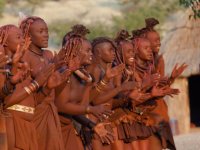The Key of Connection
Your content has been saved!
Go to My Saved Content.Feeling Felt
Over the past few weeks, I have learned deeply. My students were paramount teachers as I was privileged to share a part of their interior worlds, their "private logic" that is a culmination of accumulated beliefs, experiences, values, thoughts and feelings. This inner world is often kept tucked away unless an environment is created that allows for feelings of safety and an untainted sense of belonging. When any child or adult enters into a space that accepts, inspires and affirms their "ever-changing personhood," we have finally found the key that unlocks the door to extravagant learning! What is that key? That golden key is connection, nothing more.
Connection is wired into our neurobiology. We are social beings, and we have evolved and thrived through thousands of years based on this brain potential. Connection or lack thereof drives all relationships, emotion and learning in life. How does connection occur? Can it be taught? How long does it take? What do I do when there are some students that truly make it feel impossible to even begin feeling a sense of connection or a mutual joining? Yes, it can be taught and nurtured.
Dr. Dan Seigel, author and psychiatrist, speaks of a mindset that is critically important to every human being as we look at engagement, motivation and those social and emotional skills that drive all learning. "Feeling felt" is connection. When we feel felt by another, we no longer experience isolation or those lonely emotions of exclusion. Feeling felt by peers in the adolescent years overrides almost every behavior or choice. Belonging matters most!
Exercise in Connection
Last week in all my classes, I shared an ancient story of an African tribal tradition described at the end of this post. Following my sharing about the Himba birth song, my fifth grade students were beyond excited to share their "songs" -- the words that expressed their identity. As a part of their writing standards covering sentence conventions, they will write their "identity" songs over the next few weeks.
When I recited the Himba story to my undergraduates, I asked them to spend a few minutes pondering and writing their song -- the best parts of who they are. I collected their papers at the end of class and actually forgot about them until ten minutes before the evening class began, when I noticed the stack of wrinkled half sheets from the afternoon stuffed inside a folder. I began to read. I could barely breathe, let alone speak, as their responses were so vulnerable. Poetry, two- or three-word descriptors and slogans splattered the torn sheets of paper as their innermost thoughts spilled out.
Closing our graduate class, I randomly shared the songs and words of my undergraduate students. They left these second-year teachers speechless. We discussed the power of story, the questions that diffuse rising anger, angst and discomfort. After the students had read each of these responses, I reminded them, "Take this story, take your story, and begin connecting with your students, uncovering their strengths, fears, hearts and genius minds!" We didn't talk after class -- we were all greatly touched, quietly pondering the expressed openness of these 18-, 19- and 20-year-olds who taught us all on this Thursday evening.
Deeper Empathy
Connection! It begins with the sharing of our human stories, followed by the deep listening that lies beyond words and never requires a verbal response. When we share our stories, taking the time to listen beyond the world of our lexicon, we begin to join hands, hearts and thoughts around the table of extravagant learning.
How do we do this?
We do this through sharing our stories, followed by the deepest kind of listening that usually escapes most of us. When we share a personal narrative, a story that brings forth our commonalities as humans, we connect on the most intimate level, because we can begin to empathize, feeling what it must be like to walk in the clothing and shoes of another.
Below is the ancient African story that I shared, followed by a few anonymous responses from my students.
The Himba of Namibia and the Birth Song
This is a legend about the value of a child. The celebrations are ongoing as the villagers sing to the child on every occasion. Here is an excerpt:
(The full text is available at the Umthwakazi Review.)
Responses from my Undergraduate Students
How do you find the key of connection with your students?
